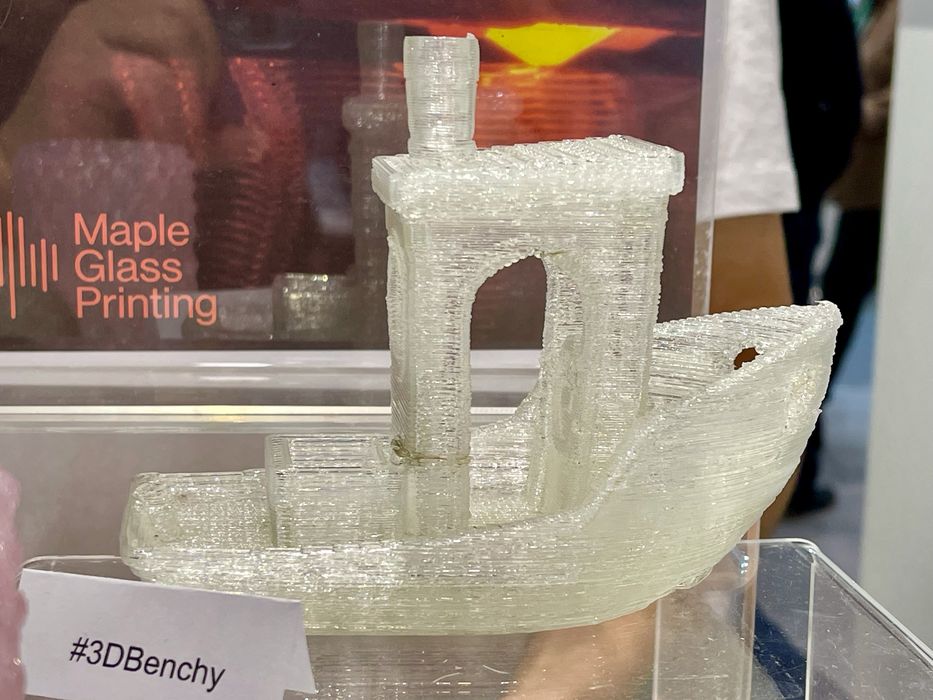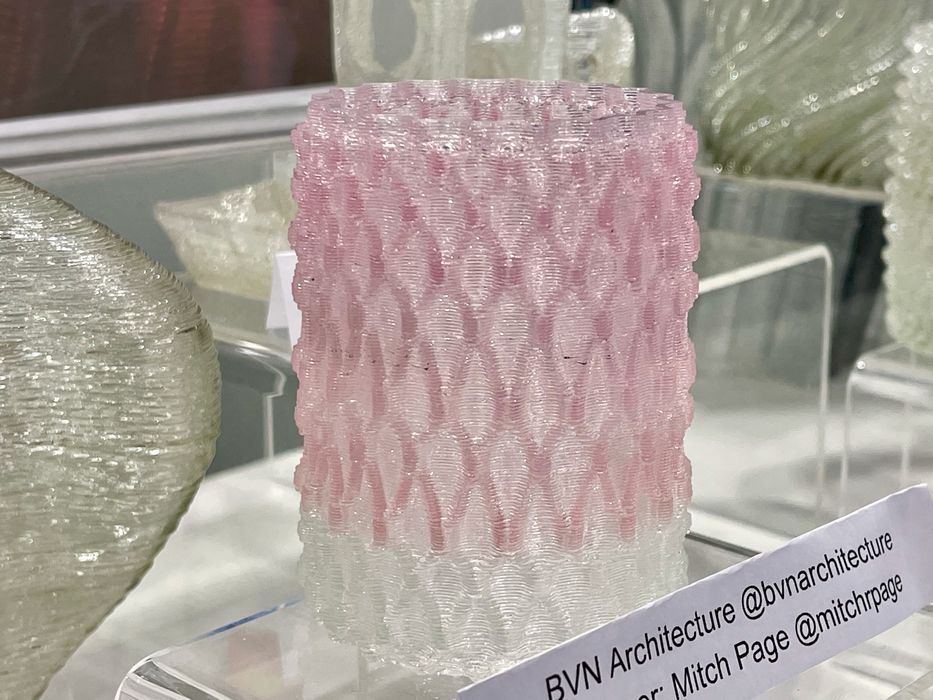
Glass 3D printing is now available to anyone from Maple Glass Printing.
3D printing glass has been done previously, but only in an experimental fashion. The issue with glass is that it requires extreme heat to soften the material, far more than used on any other 3D printing processes.
That seems to have been overcome by Australia-based Maple Glass Printing, which has developed a commercial glass printer, the Maple 3.
As you can see above, the Maple 3 is entirely capable of 3D printing a glass #3DBenchy, the standard test object in our industry. Note, however, that this print is a bit scaled up from the typical size.
Nevertheless, it is clear to see how the Maple 3 lays down glass layers in a manner quite similar to FFF 3D printing.
The startup company has been working on the project for four years, and ultimately produced the Maple 3 as their product.

How does it work? Instead of filament, the Maple 3 uses glass rods of one meter in length. These are mechanically fed into the nozzle, which operates at scorching temperatures of 900-1000C, far above FFF temperatures.
Maple Glass Printing developed the heater block themselves, as there are no commercially available components that can operate at those temperatures.
Their 1.5mm diameter nozzle can lay down extrusions of 2.0mm height. Layer sizes can be as small as 0.1mm, about the same as desktop FFF 3D printers. They told us the flow rate is actually higher than FFF, but the print speed is slower.
You might be wondering how much power is required to melt glass at such high temperatures, and representatives explained that it actually isn’t that much: 300-400W, or 5X less power than a decent hair dryer.
Another interesting feature is that the printed glass is annealed within the build chamber during printing. This also provides relief of technical stress as the print proceeds. Apparently this enables the Maple 3 to print incompatible glass together.
While the Maple 3 can print items with resolution comparable to FFF 3D printers, the representative explained that they are able to scale the glass printing process. They may, for example, develop a large-format glass 3D printer. That could be extremely interesting for industry.
One challenge Maple Glass Printing may encounter is that their technology is so new and unique they may have to educate customers on the process and help identify applications for the technology.
But that’s the same problem every new 3D printing process faces.
